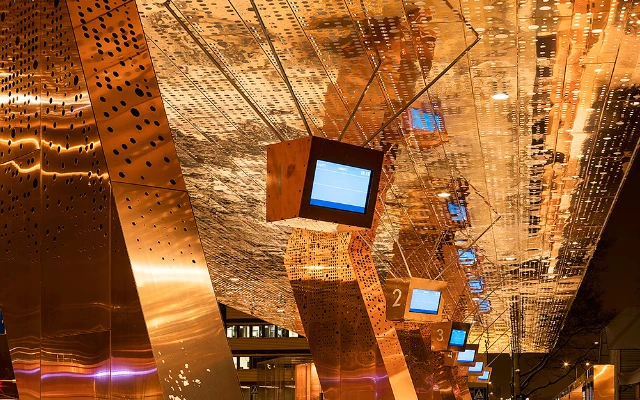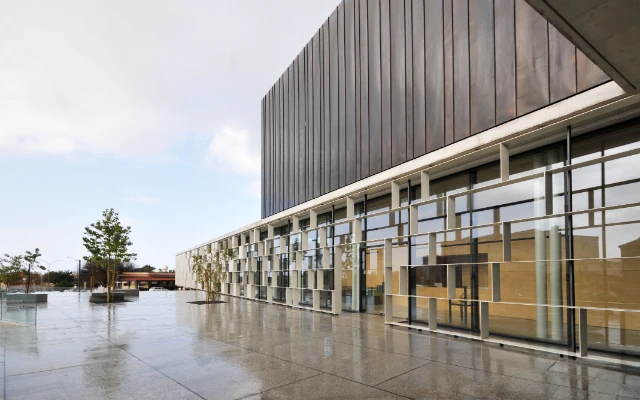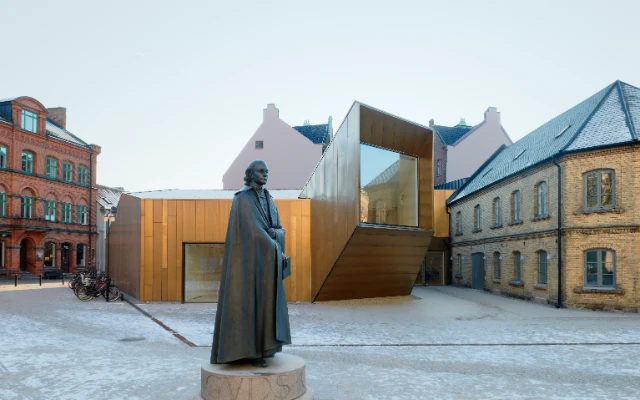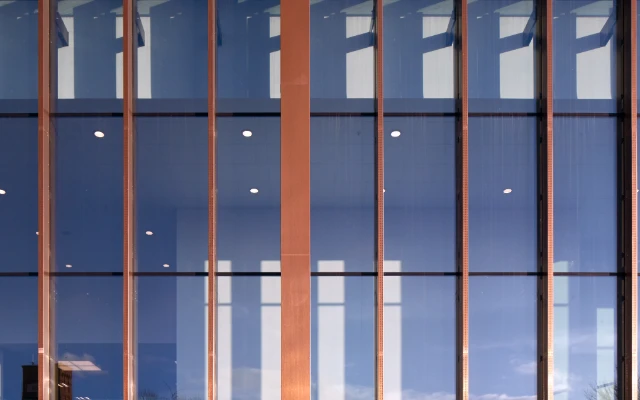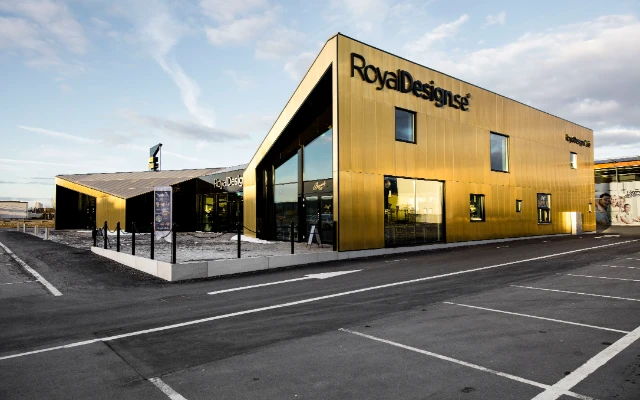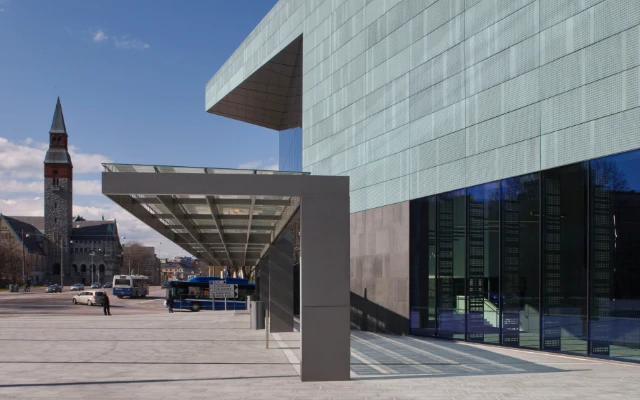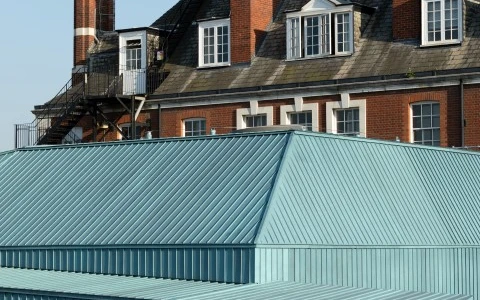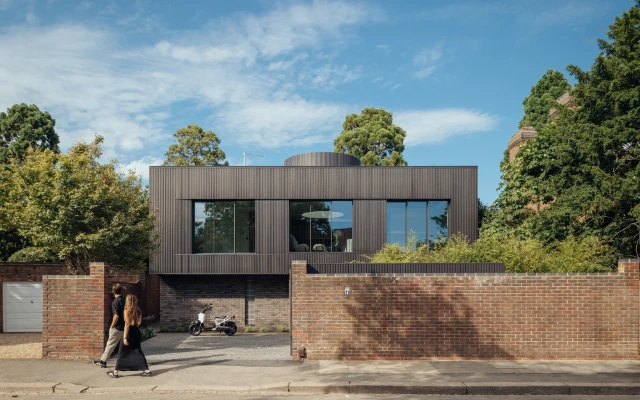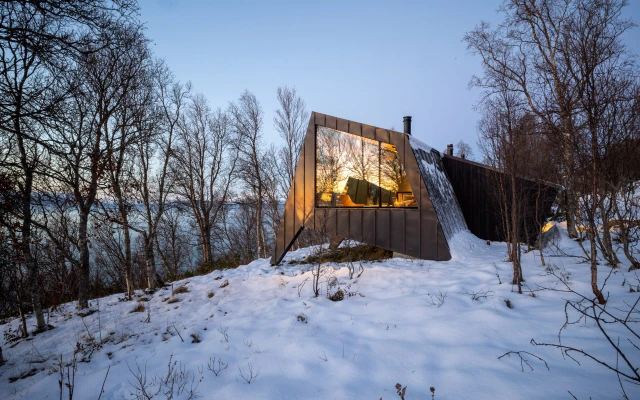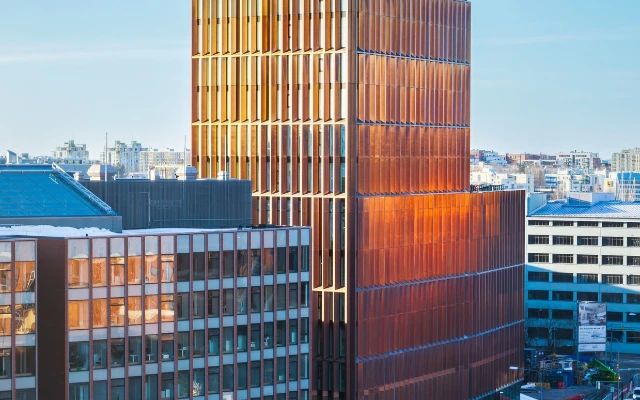Windermere Jetty Museum by Carmody Groarke
‘Nordic Brown pre-oxidised copper is used as the determining material to give architectural consistency to roofs and walls… and to the museum buildings working together as a cohesive whole’
The Windermere Jetty Museum was recently shortlisted for the 2021 RIBA Stirling Prize, having already won an RIBA National Award and the RIBA North West Building of the Year Award. The museum is unified and defined by facades and oversailing roofs clad in Nordic Brown pre-oxidised copper, developing naturally over time and responding to the unique lakeside context – as architects Carmody Groarke explain.
The new museum opened in March 2019 to house an internationally significant boat collection on the shores of Windermere in the Lake District National Park. It includes exhibition spaces for the display of steam launches, motorboats, yachts and other vessels, telling the stories of their construction and use on the lake. The site repurposes a historic gravel extraction plant, continuing the working life of the place with an active conservation programme of the boats. Emphasis is placed on the visitor experience amongst buildings in a park landscape that creates a connection between people, boats and water, as well as providing a reinterpretation of the site’s picturesque and industrial heritage.
| Location | Windermere, UK |
| Material | Nordic Brown |
| Designer | Carmody Groarke |
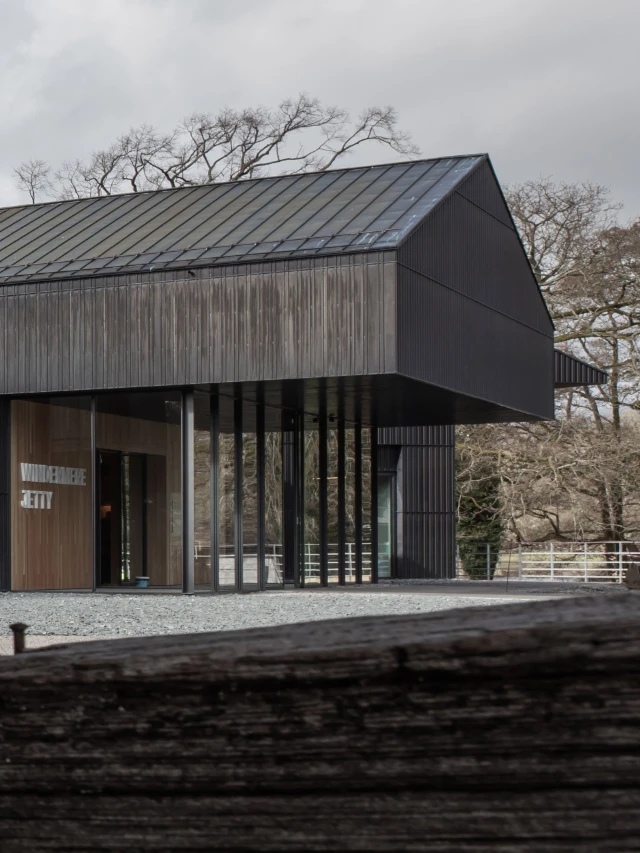
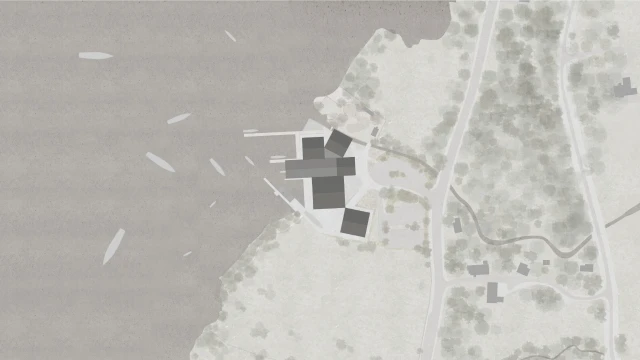
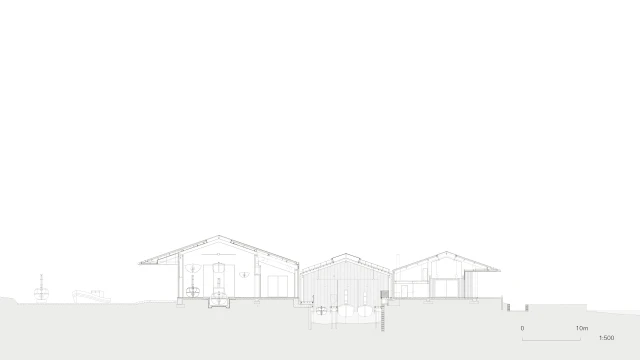
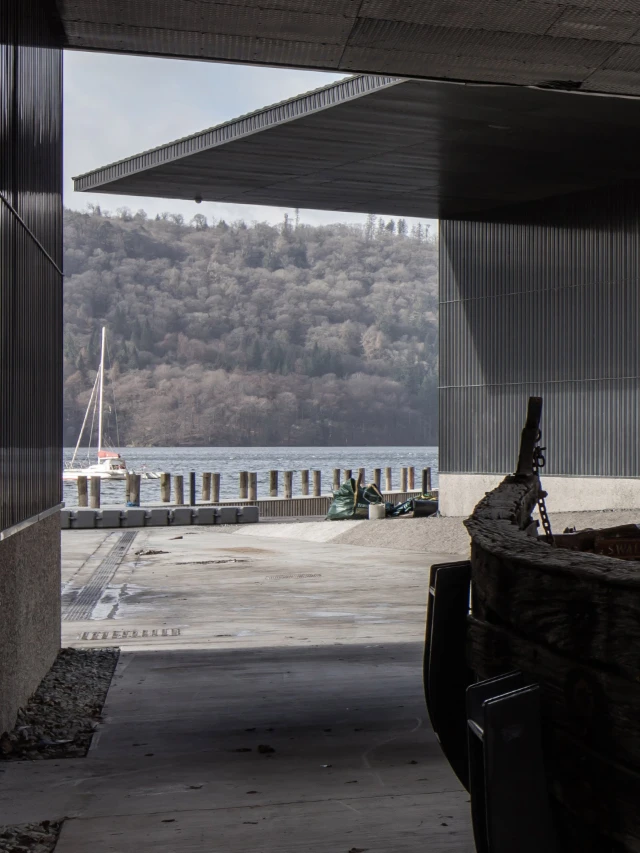
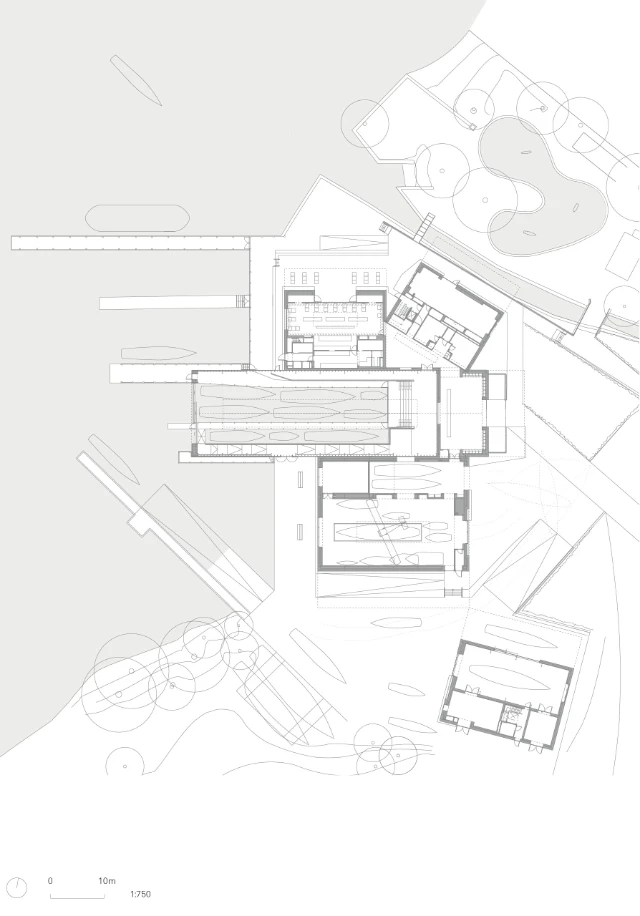
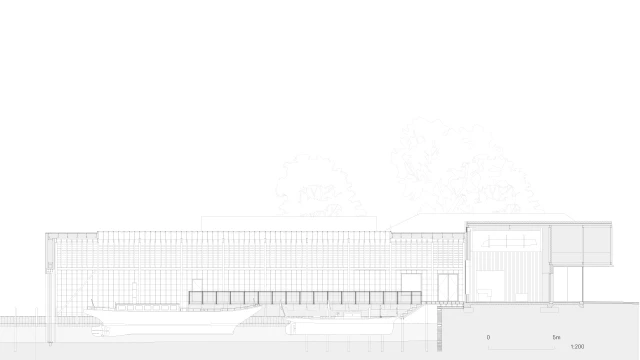
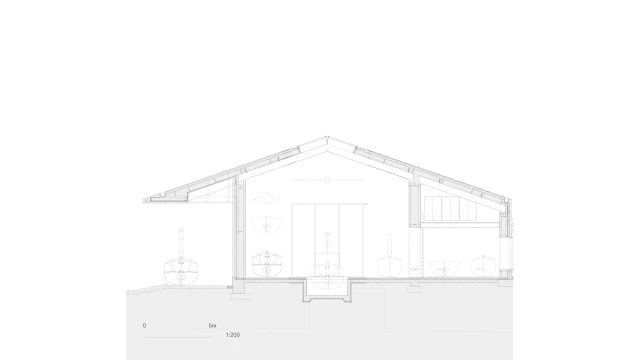
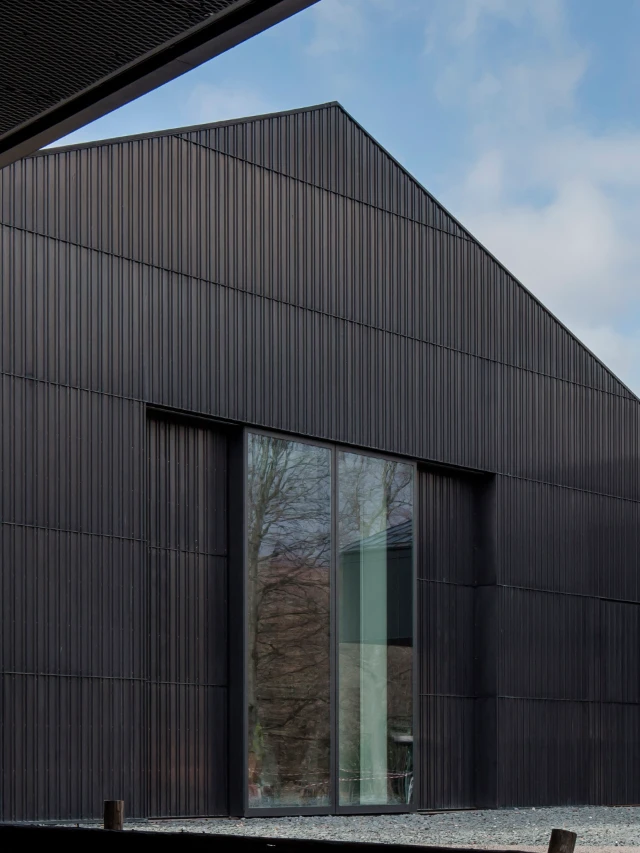
Relationship with Land and Water
Rather than a singular huge building, a granular ensemble of smaller buildings that are square on plan creates a more fitting scale with its context. The museum therefore has a strong topographical relationship with the land and the water. The wet dock forms the centre-piece of the museum and brings the lake into the heart of the experience to present the collection at water level. Other buildings making up the visitor route including: main entrance, conservation galleries, interpretation, education and cafe, all clustered around the wet dock but elevated on a podium away from the risk of floodwaters. A conservation workshop is a standalone building placed closer to the water level on the working boatyard.
The architectural language of the museum is characterised by the vernacular typology of the roof, taking reference from the pronounced overhanging eaves of ‘Broadleys’, C.F.A. Voysey’s grand house on Windermere, as well as more archetypal agricultural and industrial buildings of the Lake District. The building forms are somehow familiar, but made special by the overhanging canopies which extend the inside spaces of the building with all-weather shelter into the landscape. Internally, each individual building is organised with a large principal room centrally orientated to face the lakeshore, with ancillary spaces and the external canopy spaces balancing each side of the symmetrical sectional composition.
Unique Copper Texture
The museum is seen and approached from all sides, from land and water, and from a number of points of elevation. Roofs and walls therefore assume equally important status in the formal composition. Nordic Brown pre-oxidised copper is used as the determining material to give architectural consistency to these elements and to the museum buildings working together as a cohesive whole. Copper is folded and pinned with a regular pattern of brass fixings to give the elevations a unique texture, which is further reinforced by the patina gained by weathering over time.
Very large windows and doors enable boats to be easily moved between outside and inside, and allow the museum route between buildings to be clearly legible. Clear tectonic expression of the natural copper cladding gives levity to the forms in strong contrast to the monolithic concrete podium that they sit upon. The repeated horizontal grammar of the cladding’s string courses, which wrap the buildings’ exterior, further references the lateral datum of the beautiful lake context.
Extensive Architectural Portfolio
Nordic Brown is part of an extensive portfolio of architectural copper surfaces and alloys from Aurubis, with an unrivalled lifespan, no maintenance and full recyclability. With an ‘A1 (non-combustible material)’ fire classification to EN 13501-1, copper is suitable for cladding tall buildings, using appropriate constructions.
The range includes Nordic Standard ‘mill finish’ and Nordic Brown pre-oxidised copper, with lighter or darker shades of brown. The extensive Nordic Blue, Nordic Green and Nordic Turquoise ranges have been developed with properties and colours based on the same brochantite mineralogy found in natural patinas all over the world, and offer various ‘Living’ surfaces. Copper alloys include Nordic Bronze, Nordic Brass and the innovative Nordic Royal with a rich golden through-colour.
